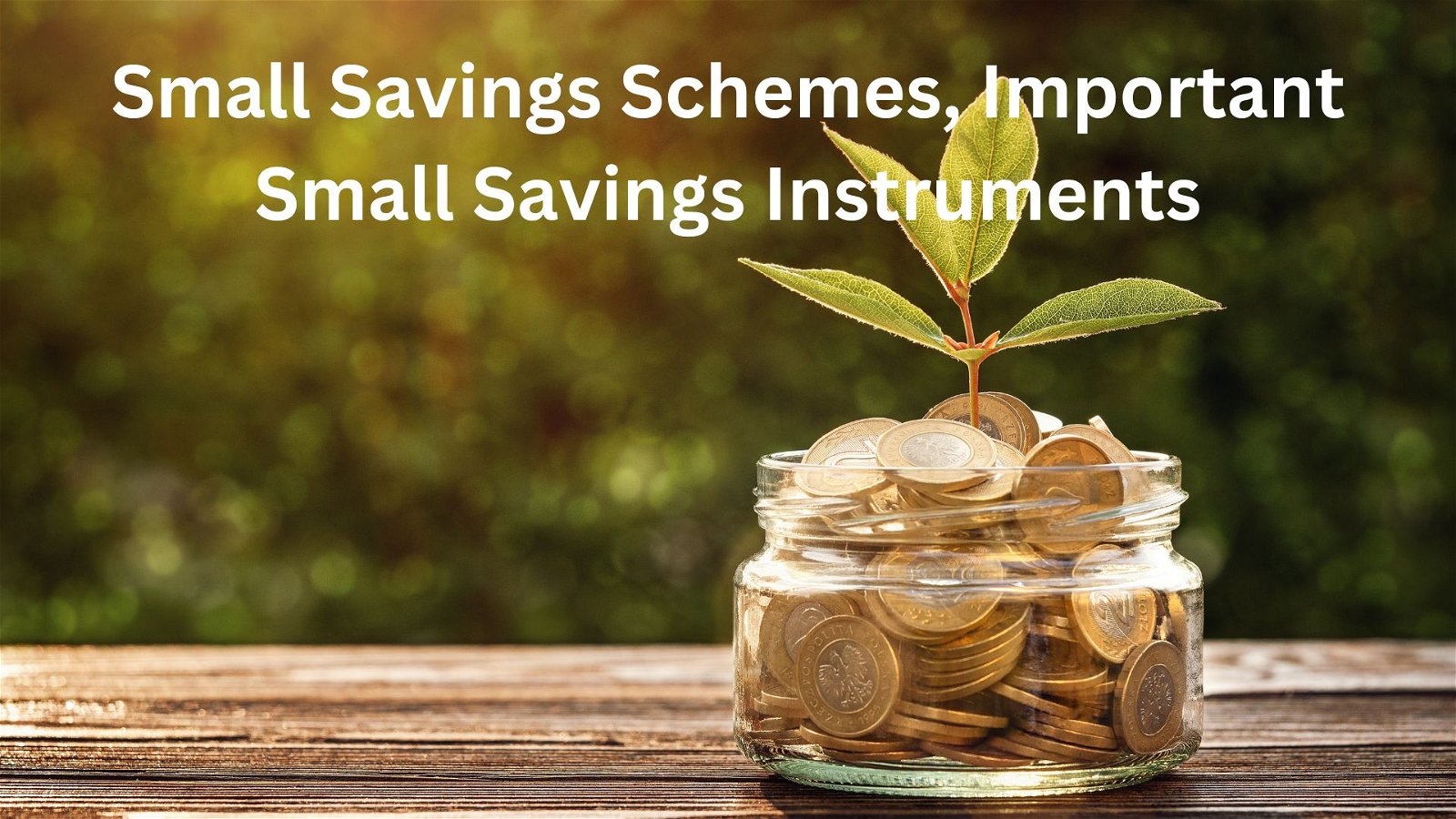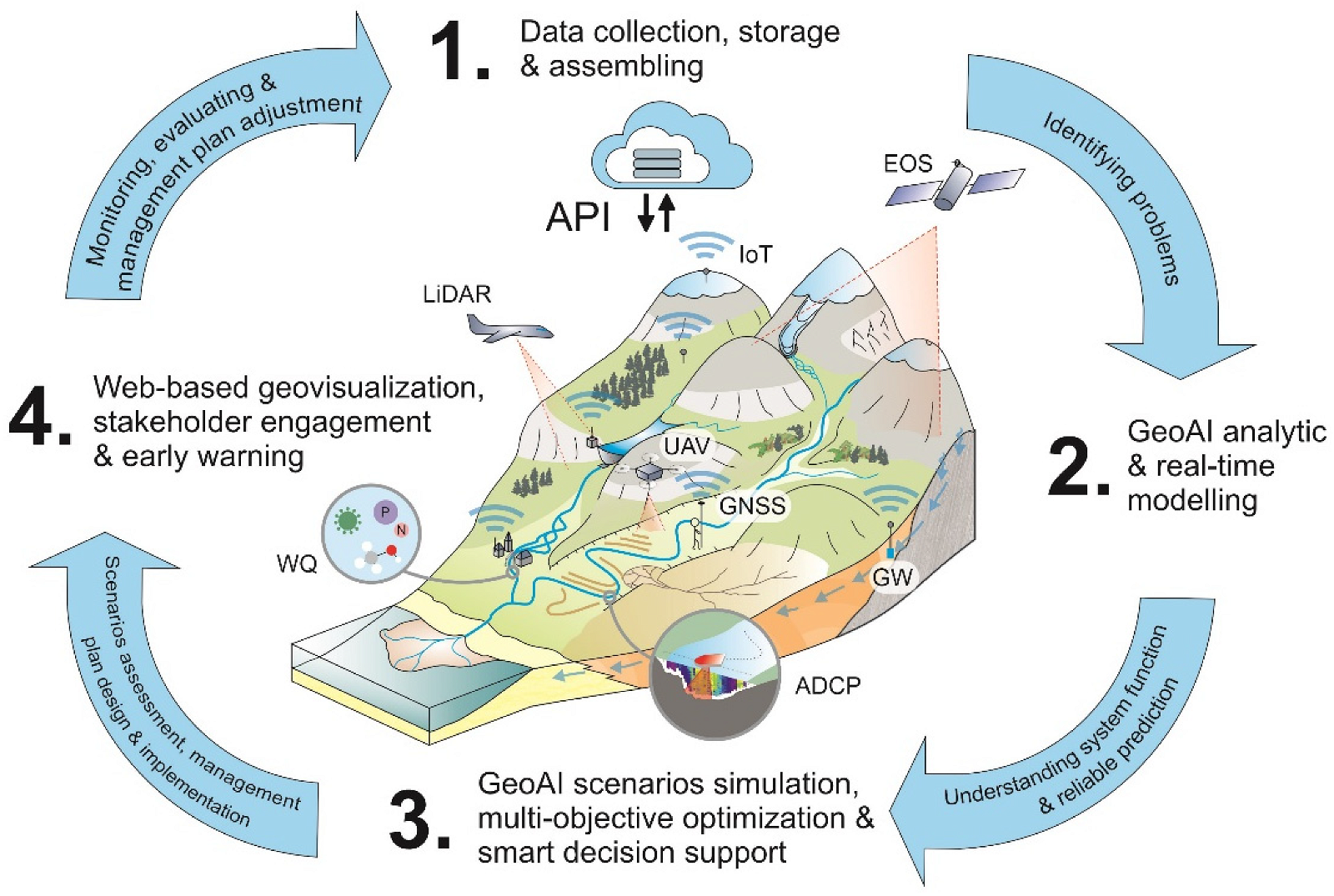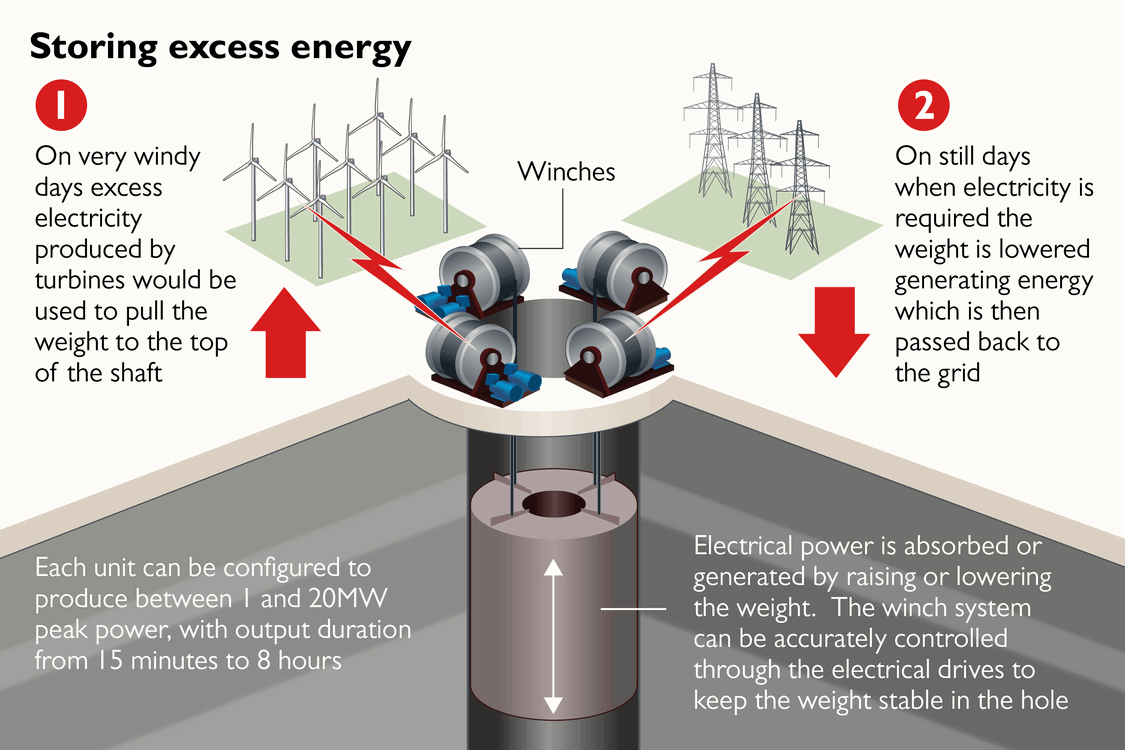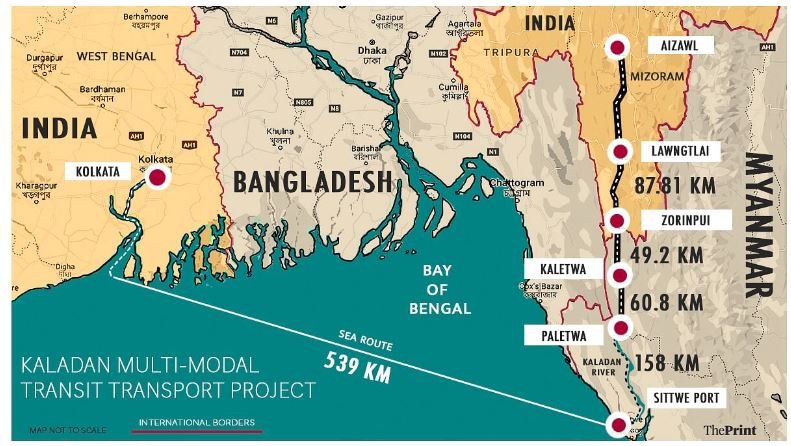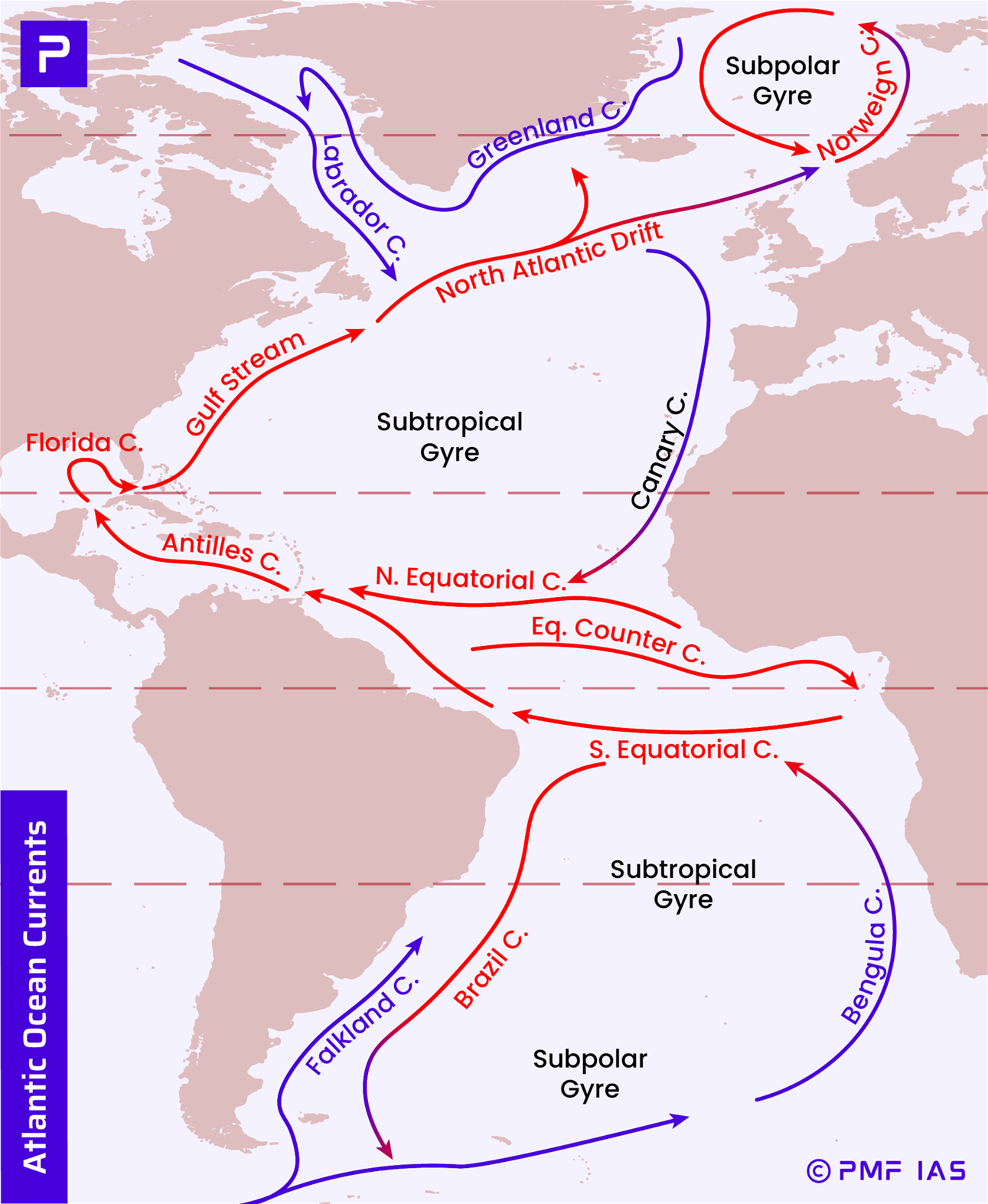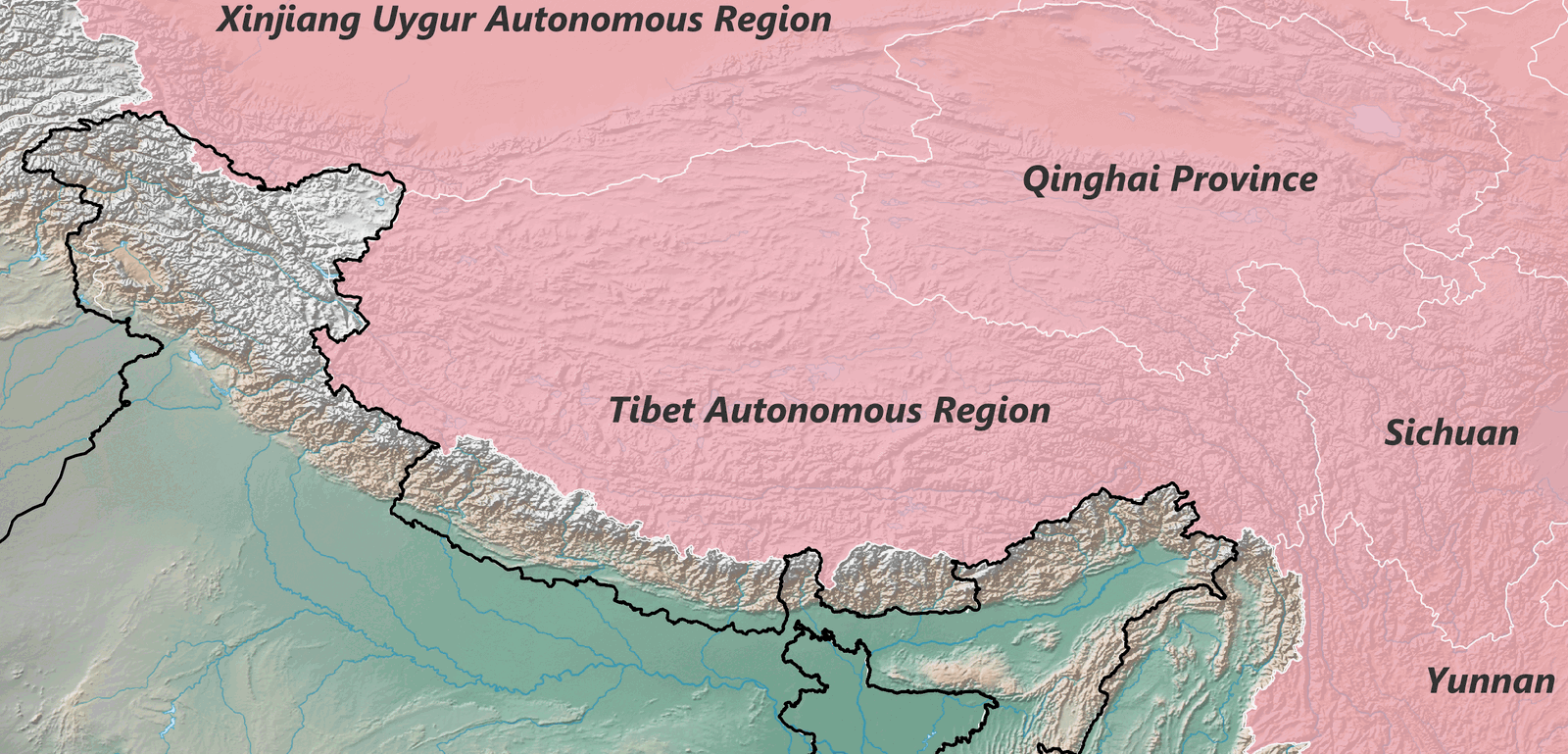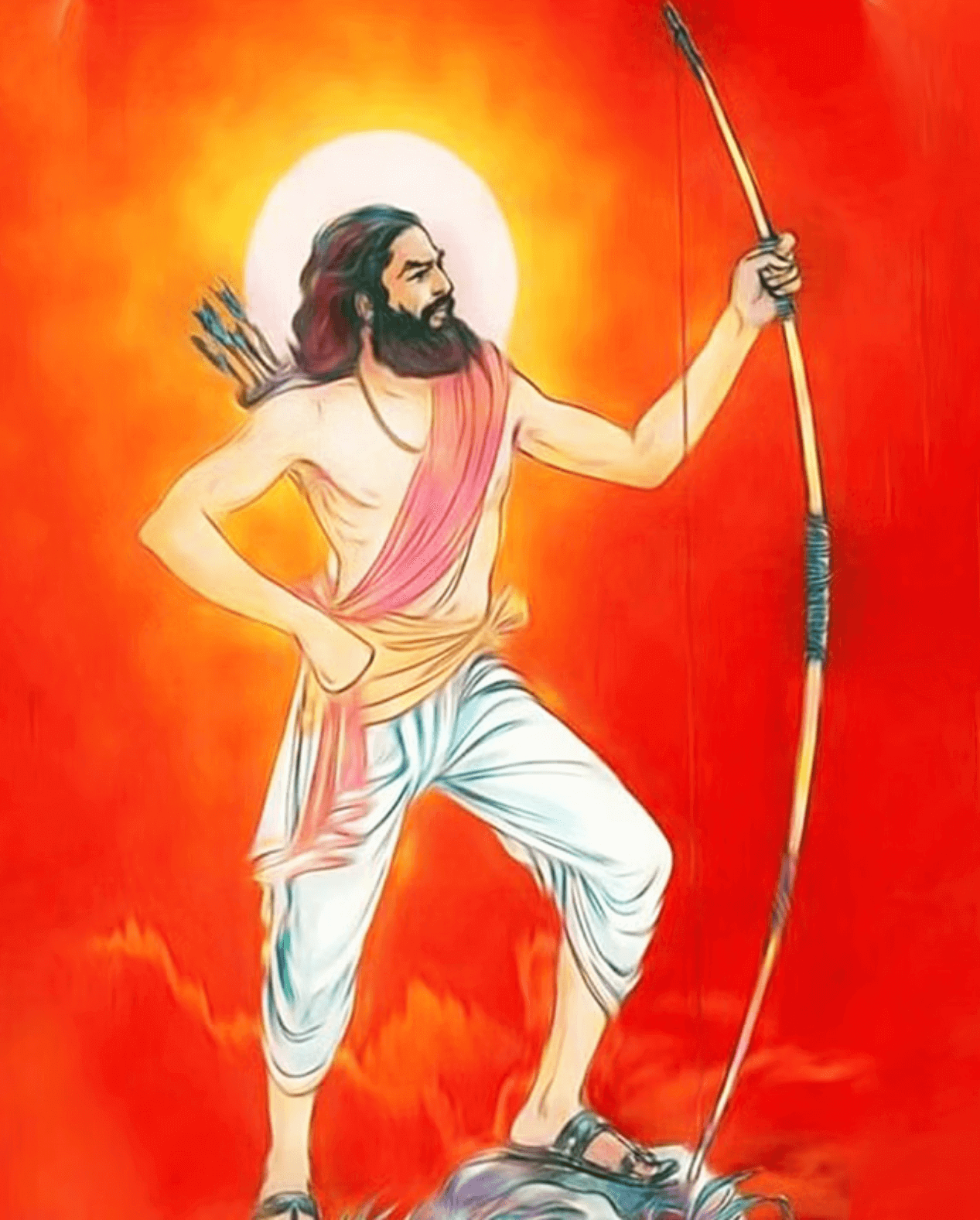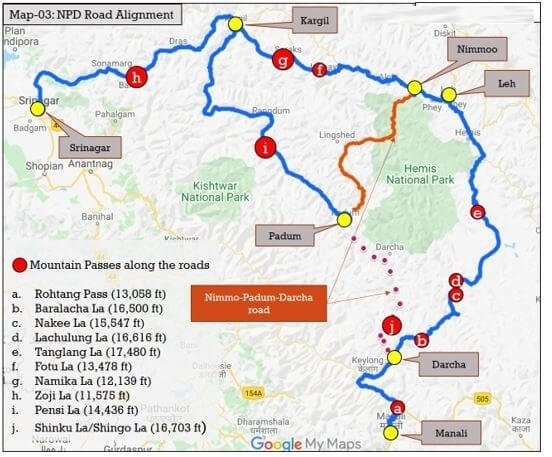
Current Affairs for UPSC Civil Services Exam – March 30, 2024
Subscribers of "Current Affairs" course can Download Daily Current Affairs in PDF/DOC
Subscribe to Never Miss an Important Update! Assured Discounts on New Products!
Must Join PMF IAS Telegram Channel & PMF IAS History Telegram Channel
{GS1 – Geo – PG – Climatology} Antarctic Circumpolar Current
- Context (DTE): Researchers analysed core samples from the central South Pacific to reconstruct the Antarctic Circumpolar Current (ACC)’s flow speed.
- Southern Ocean winds gained strength by 40% in the last 4 decades, speeding up ACC.
- Also, Human-caused climate change is likely to strengthen ACC, which could lead to increased heat transport to Antarctica‘s ice shelves. This could contribute to the melting of Antarctic ice shelves, which are already losing mass at an average rate of about 150 billion tonnes per year.
- This increased ice loss can lead to rising sea levels, impacting coastal areas and ecosystems globally.
Antarctic Circumpolar Current (ACC)
- The Antarctic Circumpolar Current (ACC), also known as the West Wind Drift is the largest wind-driven current on Earth.
- ACC is the only current in the global ocean to close upon itself in a circumpolar loop. It flows in a clockwise direction when viewed from the South Pole.
- It is the only current that goes all the way around our planet and connects the Atlantic, Pacific, and Indian Oceans.
- It is a massive flow of water that acts as a barrier separating the Southern Ocean from more northern oceans.
- It plays a crucial role in regulating global climate by facilitating the exchange of heat, carbon dioxide, and chemicals between oceans.
Functions of ACC
- Climate regulation: The ACC helps distribute heat around the planet by moving warm water from the equator towards the poles and cold water towards the equator.
- Carbon sequestration: The ACC absorbs significant amounts of carbon dioxide from the atmosphere, transporting it deep into the ocean where it can be stored for centuries.
- Nutrient distribution: By stirring up water from different depths (upwelling), the ACC brings nutrients from the deep to the surface, supporting marine ecosystems around Antarctica and beyond.
- Isolates Antarctica continent: It minimizes the flux of surface subtropical heat into the polar oceans, thus thermally isolating Antarctica.
- It serves as the northern boundary to the polar seas, containing the fresh, cold, stable surface waters necessary for sea ice formation and limiting the northern extent of the seasonal sea ice fields.
{GS2 – IR – Middle East} US supports Gaza ceasefire resolution
- Context (IE): United States, which has repeatedly used its veto to shield its ally Israel, abstained from the Gaza ceasefire resolution vote.
- The UN Security Council demanded an immediate ceasefire between Israel and Hamas and the immediate and unconditional release of all hostages.
- However, this is not the first time that the US has distanced itself from the Israeli position.
- In the final days of the Obama administration in 2016, the US abstained from the UNSC resolution, deeming Israel’s settlements in Palestine illegal and a violation of international law.
Change in the stand of US
- Historical support: The US has broad bipartisan support for Israel. According to a think tank, the US vetoed 45 resolutions critical of Israel until December 18, 2023.
- Criticism from Americans: The current situation in Gaza attracted criticism towards Israel’s action and the full US backing for it.
- Presidential election in US: Electoral calculations of Arab & Muslim vote, Democratic party’s left-wing votes have been critical of Israel.
- Role of Swing states in US election: Swing states like Michigan and Wisconsin have significant Muslim populations sympathising with Gaza.
- Concerns of Arab countries: Arab nations are growing increasingly concerned about Israel’s actions.
Impact of Gaza ceasefire resolution
- Israel has refused to accept it.
- This is indicative of international political support for the situation in Gaza.
- However, there doesn’t seem to be any near-term solution to the conflict.
For more details, visit > Israel-Palestine Conflict.
{GS2 – MoCI – Initiatives} Government e-Marketplace (GeM)
- Context(PIB): The Government e-Marketplace (GeM) has achieved a Gross Merchandise Value (GMV) of ₹4 lakh crore at the end of the financial year, doubling its previous year’s GMV.
Factors contributed to its growth
- Services procurement contributed nearly 50% of the GMV, a surge of 205% compared to the previous year.
- Increased engagement from states, including top procuring states like Gujarat, Uttar Pradesh, and Delhi, has contributed to the growth in GMV.
- Central entities, including ministries and CPSEs, have contributed to nearly 85% of the ₹4 lakh crore milestone.
- Collaboration with CSCs and India Post offices has maximised outreach and capacity-building at the grassroots level.
Significance of GeM
- Breaking Cartels: GeM has disrupted the dominance of established service providers.
- Vast Network: Over the years, GeM has connected 1.5 lakh+ government buyers and 21 lakh sellers.
- Sustainable Procurement: GeM’s network, including integration with Panchayats and Cooperatives, promotes sustainable procurement and efficient public spending.
- Empowering Marginalized Sellers: Nearly half of GeM’s orders, totalling ₹ 4 lakh crore, have uplifted marginalised seller segments.
- Inclusive Initiatives: GeM’s programs, such as Vocal for Local, One District, One Product, Womaniya, and Startup Runway, empower domestic businesses, leading to job creation and increased incomes.
- Diverse Products: With 12070+ product categories and 320+ service categories, GeM serves as a comprehensive procurement platform.
- Access for Entrepreneurs: GeM provides small domestic entrepreneurs with access to government tenders anytime, anywhere.
|
{GS2 – Polity – IC – Elections} C-Vigil App
- Context (PIB): Over 79,000 violations reported so far through the c-vigil app since the announcement of the General Elections; 99 % of cases disposed off.
- cVIGIL is a mobile application developed by the Election Commission of India (ECI).
- ‘cVIGIL’ stands for Vigilant Citizen and emphasizes the proactive and responsible role citizens can play in conduct of free and fair elections.
- It enables citizens to:
- Allows users to report Model Code of Conduct (MCC) / Expenditure violations.
- Provides a platform for citizens to participate in the electoral process.
- Uses GPS to track the location of the violation.
- Allows users to capture the live incidents only.
- Tracks the progress of the complaint.
- Feature to report the case of MCC violation anonymously.
{GS3 – Envi – CC} Carbon imperialism
- Context (News18): Guyana’s President and BBC journalist clashed over climate change and oil drilling from its recently discovered oil reserves worth 150 billion dollars.
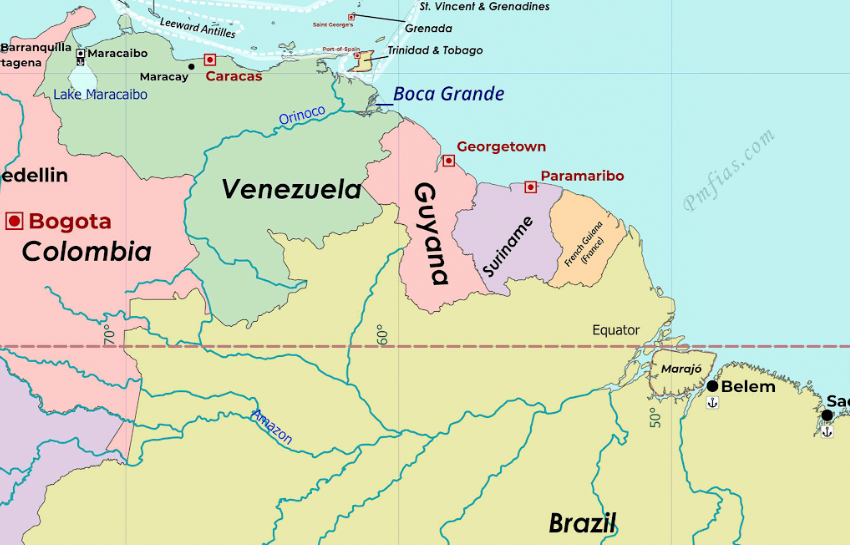
- However, it has been contended that it would lead to 2 billion tons of Carbon emissions.
- The debate reflects discussions on carbon imperialism, in which developing economies feel the West lectures them on carbon emissions.
What is carbon imperialism?
- Carbon imperialism describes the unequal sharing of the blame for carbon emissions and environmental harm.
- Developed countries, having emitted more carbon historically, pressure developing nations to adopt environmental policies.
- This occurs despite developed nations having their own substantial carbon footprints.
- The U.S. produces at least 35 per cent more coal than India, even though India’s population of 1.2 billion is roughly four times that of the U.S.
- This influence can hinder the economic growth of developing nations.
- Example: The pressure from affluent nations to abandon hydrocarbons and oppose fossil fuel projects in developing countries illustrates this pattern.
|
{GS3 – Envi – Conservation} Push for Nuclear Energy as a clean power source
- Context (IE): Brussels hosted a first-of-its-kind Nuclear Energy Summit that was billed as the most high-profile international meeting on nuclear energy ever.
- The International Atomic Energy Agency (IAEA) called it a “landmark” and a “turning point” in the efforts to expand the use of nuclear energy to generate clean electricity.
- The meeting was an attempt to build momentum for a greater acceptance of nuclear energy which many countries continue to have apprehensions about.
- Such apprehensions were aggravated by the Fukushima accident in 2011.
- The continuing crisis at the Zaporizhzhya nuclear power plant in Ukraine, the first nuclear facility to have been caught in a dangerous armed conflict, has also been a source of grave concern.
Nuclear Energy
- It is the second largest source of low-carbon electricity production globally (after hydropower) and provided about 30% of all low-carbon electricity generated in 2019.
- Nuclear power accounted for 9.8% of total electricity production in 2021, a decrease of 0.4 percentage points from the previous year.
- The share of nuclear grew rapidly from 1980 to 1990, almost doubling, but has declined since 2000.

Benefits of Nuclear Energy
- Clean source of energy with a minimal carbon footprint. Greenhouse gas emissions are only in the range of 5 to 6 grams per kilowatt hour. This is 100 times lower than coal-fired electricity and about half the average of solar and wind generation.
- Perennial availability: Unlike renewable energy sources such as wind or solar, nuclear power is not dependent on weather conditions and can provide a stable electricity supply regardless of external factors.
- Nuclear power generation results in avoiding emissions of more than 1 billion tonnes of CO2 equivalent every year. In the last five decades, this has resulted in a cumulative avoidance of about 70 billion tonnes of CO2 equivalent.
- Environmental benefits: Unlike fossil fuels, nuclear power emits no fine particles, nitrogen dioxide, sulfur dioxide, nitrates or phosphates into the atmosphere.
Challenges associated with adoption of nuclear energy
Nuclear Waste
- Radioactive waste management is challenging due to extended half-lives and high-level waste generated by nuclear power plants.
- Further, there are no long-term storage solutions for radioactive waste, and most are stored in temporary, above-ground facilities.
- These facilities are running out of storage space, so the nuclear industry is turning to other types of storage that are more costly and potentially less safe.
Costlier source
- Nuclear reactors require high investments and a technology base, take years to build, and operate under a variety of regulations and constraints, making them unattractive for countries wanting to ramp up their electricity generation quickly and affordably.
- Initial capital costs, fuel, and maintenance costs are much higher for nuclear plants than wind and solar, and nuclear projects tend to suffer cost overruns and construction delays.
Longer life of nuclear reactors
- The average life of operational nuclear reactors is more than 31 years, which highlights the fact that few new reactors have come on board in the last decade.
- IAEA data shows that the number of operational nuclear reactors has actually decreased in the last twenty years, from 437 in 2003 to 411 now.
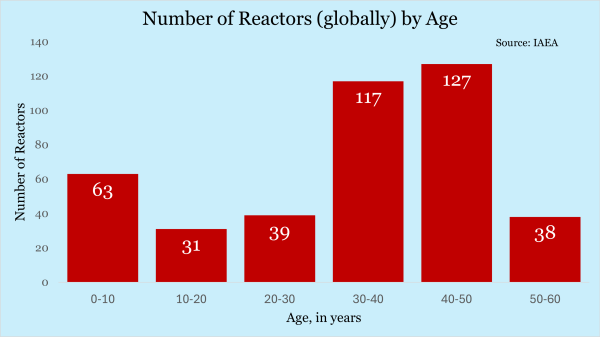
Declining energy generation
- Nuclear energy accounts for less than 10 per cent of global commercial electricity generation, and its share has been declining for almost three decades now.
- The total installed electricity generation capacity has shown only a marginal increase from about 360 GW in 2003 to 371 GW now.

Accidents
- The 1986 Chernobyl disaster in Ukraine led to the deaths of 30 employees in the initial explosion.
- A massive tsunami bypassed the safety mechanisms of several power plants in 2011, causing three nuclear meltdowns at a power plant in Fukushima, Japan, resulting in the release of radioactive materials into the surrounding area.
Cancer risk
- Studies show an increased risk of cancer for those who reside near a nuclear power plant, especially for childhood cancers such as leukaemia.
- Workers in the nuclear industry are also exposed to higher-than-normal levels of radiation and, as a result, are at a higher risk of death from cancer.
Steps taken at the global level to expand nuclear energy
- The IAEA has launched an ‘Atoms4Climate’ initiative and has begun an engagement with the climate community, especially at the COPs or the annual year-ending climate conferences.
- At COP27 in Sharm el-Sheikh, IAEA set up a pavilion for the first time.
- At COP28 in Dubai, about 20 countries pledged to work towards tripling global nuclear energy installed capacity by 2050.
India’s position on nuclear energy

- India currently has 23 operational nuclear reactors.
- The currently operational reactors have a combined installed electricity generating capacity of 7,480 MW (about 7.5 GW).
- At least ten more reactors are under construction, and the capacity is supposed to triple to 22,480 MW by 2031-32.
- The share of nuclear energy in total electricity generation capacity is just about 3.1 per cent, among the lowest in countries that do use nuclear energy.
- In April 2023, the government announced plans to increase nuclear capacity from 6780 MWe to 22,480 MWe by 2031, with nuclear accounting for nearly 9% of India’s electricity by 2047.
Challenges limiting the growth of Nuclear Power in India
- Limited domestic uranium resources: India’s uranium resources are mostly low-grade and uneconomic to mine. Thus, they are insufficient to meet the demand for nuclear power plants.
- Nuclear liability: India’s Civil Liability for Nuclear Damage Act (CLNDA) allows the operator of a nuclear plant to seek compensation from the supplier in case of an accident caused by defective equipment or services.
- This provision has deterred many foreign suppliers from entering the Indian nuclear market, as they fear legal and financial risks.
- Public Opposition due to safety concerns. This opposition has made it challenging for the government to build new nuclear power plants and expand existing ones.
Important Terminologies Related to Nuclear Energy
Other Facts
|
{GS3 – Envi – Conservation} Threats faced by Great Indian Bustard
- Context (IE): SC will review its April 2021 order to bury underground all power lines in the habitat of the Great Indian Bustard (GIB) after the Centre submitted its affidavit.
- In its 2021 order, the SC listed two types of power lines — those that would install bird diverters, and those that would be converted to underground lines, if feasible, within a year.
- A summary cost estimate put the total expenses of installing bird diverters across 1,342 km and undergrounding 104 km at approx Rs 150 crore.
Centre’s Arguments
- As per the GoI, taking lines of 66 KV and higher voltage underground was not feasible for the evacuation of bulk power due to constraints such as transmission losses, maintenance challenges, multiple cable joints, increased time requirements, and concerns of safety.
- Further, harnessing renewable power from high-potential areas of Rajasthan and Gujarat was “essential for meeting rising power demand and India’s international commitments on climate change”.
Impact of power lines on GIB
- In 2020, a study carried out by the Wildlife Institute of India in and around Desert National Park in Rajasthan estimated that power lines killed around 84,000 birds of multiple species every year.
- GIBs are especially vulnerable because of their narrow frontal vision and large size.
- Unlike some birds that have a panoramic vision around the head, species like raptors and bustards have extensive blind areas above their heads.
- They cannot detect power lines ahead of them from far. As they are heavy birds, they are unable to manoeuvre across power lines within close distances.
Other threats faced by GIB
- Free-ranging dogs
- Hunting.
- Widespread use of pesticides in farmlands.
- Loss of grassland, particularly nesting sites.
- Erosion of support from local communities.
{GS3 – S&T – ISRO} POEM-3
- Context (BT | TH | TOI): ISRO recently announced that its PSLV Orbital Experimental Module-3 (POEM-3) re-entered the Earth’s atmosphere without leaving any debris in orbit.
- This event was part of the PSLV-C58/XPoSat mission, aimed at reducing space debris by leaving virtually no debris in orbit.
- The PSLV-C58 Mission, successfully concluded on January 1, 2024, involved placing all satellites into their planned orbits.
- After achieving this main goal, the final stage of the PSLV rocket became a stable platform called POEM-3, using a 3-axis stabilisation technique.
- This change represents a strategic use of the rocket’s final stage beyond its initial satellite launch mission.
- The PSLV-C58/XPoSat mission marks the third successful instance of POEM, denoted as POEM-3.
What is POEM?
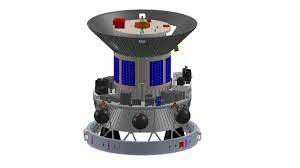
- The PSLV has four stages. After using up their fuel, the first three stages fall into the ocean.
- The fourth stage, known as PS4, usually becomes space debris after launching the satellite.
- However, for the PSLV-C53 mission, the PS4 stage will have a new role as a stable platform for experiments. The PS4 will orbit the Earth while staying stable.
- This new approach turns part of the PSLV into a laboratory for space research.
- POEM has its own Navigation Guidance and Control (NGC) system. This system acts as the platform’s brain, ensuring it stays in a stable position accurately.
- POEM is equipped with payloads and obtains its power from solar panels installed around the PS4 tank, supplemented by a lithium-ion battery.
- For navigation, it utilises four sun sensors, a magnetometer, gyroscopes, and the NavIC system.
- Additionally, it features specialised control thrusters powered by stored helium gas and is equipped with a telecommand capability for receiving instructions.
POEM vs. Satellites
- Satellites are like specialised spaceships built for long-term missions in space, such as weather monitoring, communication, or navigation.
- They have their own power, communication systems, and advanced controls to stay in orbit for years.
- POEM is different. It is a temporary orbital lab created by repurposing a rocket’s final stage.
- It carries scientific experiments into space for a short period, using basic controls for stability.
- Instead of staying in orbit long-term, POEM is designed to safely re-enter Earth’s atmosphere after completing its experiments, leaving no debris behind.
3-axis stabilisation technique
- In the context of spacecraft and satellites, it refers to the method of controlling the orientation of the object in space with respect to all three spatial dimensions (pitch, yaw, and roll).
- This ensures the spacecraft maintains a stable position and orientation, allowing it to face the desired direction.
- It’s achieved through various mechanisms, such as reaction wheels, gyroscopes, and sometimes thrusters, which apply small amounts of force or torque to adjust the spacecraft’s position as needed.
- This stabilisation is crucial for a variety of tasks, including precise pointing of instruments for data collection, communication with Earth, and optimal positioning of solar panels for energy collection.
{Prelims – In News} Luna Crater
- Context (IE): Scientists have officially confirmed that the colossal 1.8 km wide crater in Gujarat’s Kutch is the outcome of one of the most monumental asteroid crashes ever witnessed on Earth.
- Known as the Luna structure, this enigmatic crater has long been linked to the ancient Harappan Civilisation.
- Situated within the low-lying Banni Plains of the Kutch Basin, the Luna structure remains submerged and inaccessible for a significant portion of the year due to its geographical location.
- Geochemical analysis at the site showed a high proportion of iridium in the soil.
- The confirmation of the Luna structure augments India’s repository of known impact craters & holds potential to catalyze further investigations into impact craters and planetary science.

|
{Prelims – In News} Matua Sect
- Context (TH): Matua community in West Bengal was in the news.
Origin of Matua sect
- It was established by Harichand Thakur, comprising Namashudras, or so-called “Dalits,” at Orakandi, Bangladesh, in the mid-19th century.
- It originated as a reform movement around 1860 CE questioning the practices of Brahminism.
Harichand Thakur (1812 – 1878)
- Born in the Gopalganj District of Bangladesh (erstwhile Bengal Presidency).
- He belonged to a Namashudra peasant family, though his ancestors were Vaishnavites.
- After the “Atma Darshan”, he was regarded as a God possessing magical capabilities.
Teaching and belief system
- He preached that except for a belief in humanity, all customary practices are pointless and distractions from God.
- Three guiding principles: Truth, Love, and Sanity.
- He emphasised education as a means of social upliftment.
- Salvation is only through “Harinaam” chanting and belief in Swayam-Dikshiti (Self-Realization).
Twelve Directives of Matua Sect
- Always speak the truth.
- Respect women.
- Always respect your parents.
- Never discriminate based on race.
- Control mental passions (lust, anger, greed, infatuation, pride, and jealousy).
- Continue to be tolerant of all other faiths and ideologies.
- Do your duties zealously while simultaneously praying to God and uttering the sacred Haribol.
- Develop honesty in your thoughts and actions.
- Create a Shree Hariparameshwar temple at your residence & a temple of pure ideas in your heart.
- Pray to God every day with commitment and holiness.
- Offer yourself as a sacrifice for the greater good.
Migration to India
- Millions of Matuas migrated to India after the 1947 partition and the 1971 war to avoid persecution and improve their living conditions.
- Pramatha Ranjan Thakur (grandson of Harichand) founded the town of Thakurnagar in West Bengal for migrant Matuas.
- Thakurnagar later became the headquarters of All-India Matua Mahasangha.
- At annual fair in Thakurnagar, Matuas offer prayers to Harichand Thakur and his wife, Shanti Devi.
Connection to Citizenship Amendment Rules
- Matuas support the Citizenship Amendment rules.
- They possess documents of Indian citizenship, including a voter identity card and an Aadhaar card.
- Yet they fear the complex procedure of citizenship registration.
- Moreover, the Matua community has a considerable influence on political representation in India.
{Prelims – PIN India} Point Calimere
- Context (TH): Annual wildlife census was conducted at Point Calimere by the Forest Department.
- Kodiakkarai also called Point Calimere or Cape Calimere, is a low headland of the Coromandel Coast, in the Nagapattinam district of Tamil Nadu.
- The Cape is located about 9 km south of Vedaranyam in the delta region of the Cauvery River and marks a nearly right-angle turn in the coastline.
- The area’s antiquity is evidenced by the Kodi Kuzhagar temple, built during the Chola period, and a Chola lighthouse, which was destroyed in the 2004 Indian Ocean tsunami.
- The forests of Kodiakkarai, also known the Vedaranyam forests, are one of the last remnants of the dry evergreen forests that were once typical of East Deccan dry evergreen forests ecoregion.

Point Calimere Wildlife Sanctuary
- The Point Calimere Wildlife Sanctuary, created in 1967, is located in Tamil Nadu.
- It houses the famous bird sanctuary of Vedaranyam and the Talaignayar forests.
- It is designated as a Ramsar site.
- It is flanked by the Bay of Bengal in the east and Palk Strait in the south.
- It was created for the conservation of blackbuck (one of the four antelope species in India – Chinkara, Chausingha and Nilgai being the other three).
- It is home to the endangered endemic Indian blackbuck and is one of the few known wintering locations of spoon-billed sandpiper. It also holds large wintering populations of greater flamingos.
- The area is dotted with salt pans and these hold large crustacean populations that support the wintering bird life.




![PMF IAS Environment for UPSC 2022-23 [paperback] PMF IAS [Nov 30, 2021]…](https://pmfias.b-cdn.net/wp-content/uploads/2024/04/pmfiasenvironmentforupsc2022-23paperbackpmfiasnov302021.jpg)
